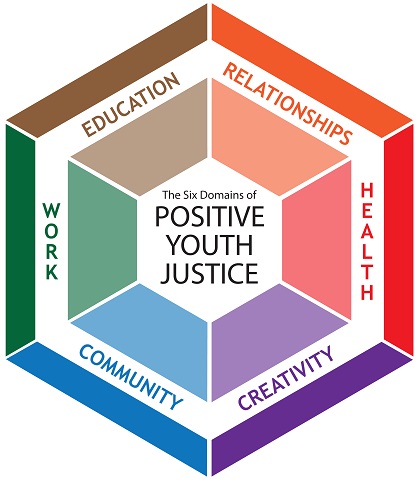To help prepare youth to succeed, DYRS infuses its culture with the principles of Positive Youth Development (PYD) and Positive Youth Justice (PYJ). PYJ applies positive youth development theories in a juvenile justice setting and uses a strengths-based approach to serving youth.
Research shows that the best way to enhance long-term public safety is to provide court-involved youth with the tools they need to successfully transition into adulthood. To help prepare youth to succeed, all aspects of DYRS culture—from staff training, to youth programs, to the agency’s accountability mechanisms—are infused with the belief that youth can change. Internally, the agency calls this Positive Youth Justice because the emphasis is on personal accountability and skill development.
Using this approach, fewer DYRS youth are being re-arrested, and fewer are being reconvicted. These precedent-setting year-to-year reductions are occurring while the agency is meeting its legal mandate to place youth in the least restrictive, most homelike environment consistent with public safety.
Positive Youth Justice focuses on the following developmental needs of youth involved in the juvenile justice system:

- Work: Work experience, apprenticeships, employment readiness, income and independence
- Education: Literacy, credentials, learning skills, career planning
- Health: Physical activity, diet and nutrition, mental and behavioral health, lifestyle
- Relationships: Communication skills, conflict resolution, family systems, intimacy and support
- Community: Civic engagement, community leadership, services, responsibility
- Creativity: Personal expression, visual arts, performing arts, language arts
The Positive Youth Justice approach was published first by a team of researchers led by Dr. Jeffrey Butts at the John Jay College of Criminal Justice in New York City1.
Our adoption of this model has been cited by jurisdictions across the country. The Director of Oregon Youth, Fariborz Pakseresht, noted, “The Oregon Youth Authority recognizes the intentional effort of DYRS to implement the Positive Youth Justice model as one that we can learn from to advance our mission of reducing recidivism, creating safer communities, and supporting youth to become productive, crime-free citizens. The Positive Youth Justice model uses data and research to inform decisions to create the best outcome for youth and safer communities, which are priorities for Oregon’s juvenile justice system.”
1. Butts, J.A., Bazemore, G., & Meroe, A.S. (2010). Positive Youth Justice: Framing Justice Interventions Using the Concepts of Positive Youth Development. Washington, DC: Coalition for Juvenile Justice.

